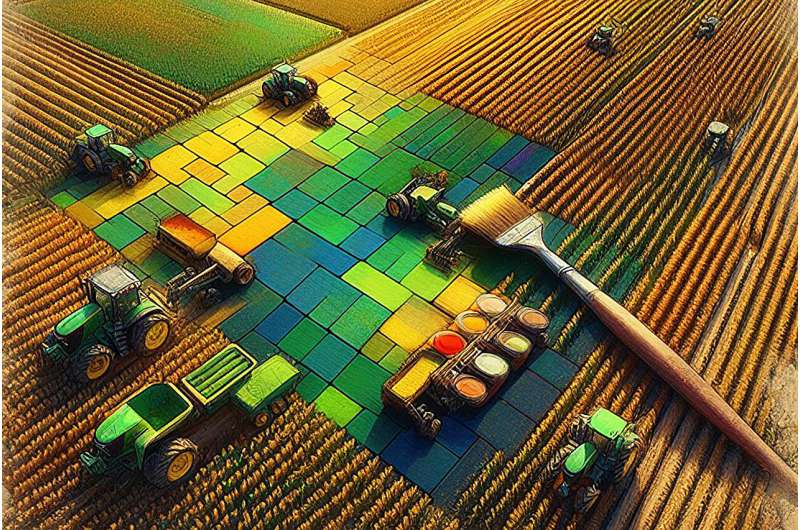
Management zone maps of little use to corn growers, study finds (Image Credit: Phys.org)

A multiyear analysis tested whether management zone maps based on soil conditions, topography or other landscape features can reliably predict which parts of a cornfield will respond best to higher rates of seeding or nitrogen application. The study found that—contrary to common assumptions—crop-plot responses to the same inputs vary significantly from year to year. The most unpredictable factor—the weather—seemed to have the biggest impact on how the crops responded to these inputs.
The new findings are reported in the Agronomy Journal.
Management zone mapping grew out of a surge in interest in digital agriculture—the use of new data-gathering and analysis technologies to better understand the interplay of factors that contribute to crop yields, said University of Illinois Urbana-Champaign crop sciences professor Nicolas Martin, who conducted the analysis with former U. of I. postdoctoral researcher Carlos Agustin Alesso.
Such approaches use field-based sensors, satellite data and other digital tools to track how crops respond to local conditions, fertilizer, seed rates and other inputs. The goal is to minimize wasteful or destructive practices while maximizing yield, Martin said.
The new study used an unusual approach to test management zone map predictions.
“We used our farm equipment as a printer, creating a patchwork of inputs like a quilt with different colors,” Martin said. “We printed our experiment on multiple sites, using a completely randomized design.”
The researchers conducted the work on seven typical non-irrigated Illinois corn production sites, each of which was subdivided into hundreds of plots. Each plot received a randomized rate of corn seeding and nitrogen application. Each plot also had its soil composition, topography and other site-specific landscape features measured. All other variables except weather were standardized across the fields. The trials took place from 2016 to 2021.
By measuring the yield of each plot during harvest over multiple years, the researchers determined which plots were the most responsive to inputs each year. They used an advanced random-forest algorithm to determine which factors—weather conditions, soil characteristics or slope, for example—best predicted whether higher nitrogen application or a higher seeding rate would improve yields.
“We found that weather variables are the most important factors determining the spatial patterns of response to the nitrogen rate or the seed rate, followed by landscape and soil attributes,” Martin said. “We also found that the responses vary from year to year depending on the weather effects. They are very inconsistent, at least in the fields we tested.”
This means that a plot that responds well to a higher nitrogen rate one year might not respond so well the next time it is planted in corn, he said. This makes the management zone mapping concept an unreliable predictor of crop responses to inputs.
“We think that these findings can explain in part why precision agriculture technologies have been unevenly adopted by farmers,” Martin said.
The researchers believe more multiyear data and better on-site sensor and analysis tools can eventually improve the predictive ability of management zone mapping.
More information:
Carlos Agustin Alesso et al, Spatial and temporal variability of corn response to nitrogen and seed rates, Agronomy Journal (2023). DOI: 10.1002/agj2.21471
Journal information:
Agronomy Journal
Provided by
University of Illinois at Urbana-Champaign
Management zone maps of little use to corn growers, study finds (2023, October 16)
retrieved 17 October 2023
from https://phys.org/news/2023-10-zone-corn-growers.html
part may be reproduced without the written permission. The content is provided for information purposes only.





